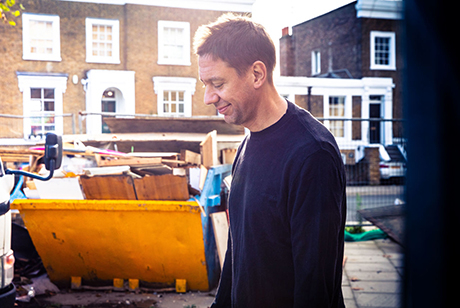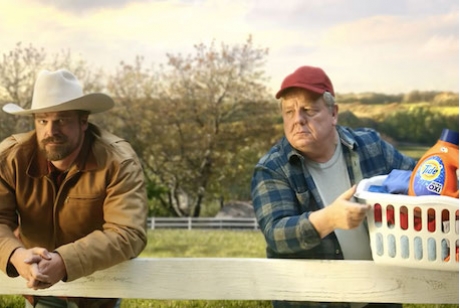New York - LifeStraw®, a revolutionary, personal water-purification tool, for use in the developing world, has won the fifth Saatchi & Saatchi Award for World Changing Ideas. It was announced last night by Her Royal Highness Princess Badiya of Jordan at a high profile presentation ceremony in New York.
The global Award is made biennially by Saatchi & Saatchi, who established the Award to recognise, celebrate and promote ideas that have the potential to change the world. The US $100,000 prize consists of US$50,000 cash and the equivalent of US$50,000 in Saatchi & Saatchi marketing consultancy.
About half of the world's poor suffer from waterborne diseases. Every day, 6,000 people, mostly children, die from drinking dirty water. In addition, the long journey often required to get clean water, robs millions of young women and girls of their dignity, energy and time.
LifeStraw® is a mobile, personal, water-purification tool that turns even the dirtiest water into safe drinking water. It contains a specially developed halogen-based resin that kills 99.9999% of bacteria and 98.7% of viruses that can cause deadly diseases. One LifeStraw® lasts for about a year.
LifeStraw® is highly portable, just 25 cm, (less than 10 inches) long - reducing the need to travel long distances to central water wells. It requires no power or spare parts and can filter up to 700 litres of water - around one year's supply.
For the more than one billion people who lack access to safe drinking water, LifeStraw® could mean the difference between life and death. It has a particular importance for women, children and people with compromised immune systems, who are especially susceptible to waterborne diseases.
Vestergaard Frandsen, the inventor of LifeStraw®, commented, "We are absolutely delighted to win this important Award, which will help drive awareness and distribution of LifeStraw® to the poorest areas in the world."
Bob Isherwood, Saatchi & Saatchi's Worldwide Creative Director and the convenor of the Award said, "The ten finalists were diverse, extraordinary, and inspiring. The winner of the Award is an absolutely outstanding idea.? The promise of LifeStraw® to bring safe drinking water, for the first time, to more than one billion people on earth is genuinely world changing."
The high-profile panel of judges included Edward de Bono, Peter Gabriel, HRH Prince Hassan, Malcolm McLaren, Carolyn Porco and Philippe Starck.
They were briefed by Isherwood to choose the idea they believed had the potential to provide the greatest benefit to the greatest number of people or to a group of people with a particular need.
Judge Peter Gabriel, commented, "LifeStraw® is a wonderful, simple and elegant solution to a problem that kills millions of people, especially kids, every year. I hope it gets out into the world in huge numbers very fast."
At the same ceremony, Edward de Bono presented his Medal for Thinking to innovator Professor Brian Derby, for his radical Printing Skin and Bones concept, saying that he selected this finalist, "Both for the originality of the idea and the practical application."
Ten finalists all exhibited at the Award ceremony:
Acuset IV Controller (New Zealand)
Intravenous Infusion (IV) is the world's most common medical procedure. In the developing world, dangerously inaccurate roller clamps are used. This US$6 reusable IV flow controller is affordable, simple to use, accurate and precise. Relatively untrained operators can achieve an accuracy and precision similar to the US$2,000 alternative used in the developed world. The Acuset IV Flow Controller has the potential to save millions of lives.? www.medicinemondiale.org
Crossbreed Collapsible Wheel (UK)
Has a segmented, hinged rim. It allows a full-size wheel to fold down from a rigid circular shape to a flattened blade-like form in one easy, flowing motion. The tyre remains fully inflated and in place on the rim. Opens up possibilities for bicycles or wheelchairs that could be folded into a package the size and shape of a golf bag and therefore much more easily placed in cars and taxis.?? www.duncfitz.co.uk
LifeStraw®(Switzerland)
A highly portable, personal, water-purification tool that turns even the dirtiest water into safe drinking water by filtering out bacteria and viruses. Provides safe drinking water for one person for a whole year. LifeStraw? is vitally important for women, children and people with compromised immune systems, who are especially susceptible to waterborne diseases. For the more than one billion people who lack access to safe drinking water in the developing world, LifeStraw? could mean the difference between life and death. www.lifestraw.com
One Laptop per Child (USA)
The OLPC laptop features new designs for a more compact, energy-efficient, and ecologically friendly computer, with a new user interface, Sugar, created especially for children. The aim is that every child in the developing world should have one in order to 'learn learning'. The OLPC Foundation hopes to eliminate illiteracy and poverty through education with the OLPC laptop. www.laptop.org
PerspectaRAD: 3-D Display for Cancer Treatment (USA)
Uses special optics and software to project hologram-like floating 3-D images of the patient's anatomy and cancer site from standard CT scans. The "crystal ball" image can be seen from any angle without the need for special eyewear.? This enables the oncology team to prepare a more accurate and effective radiation treatment plan - a critical step in eradicating cancer.? www.actuality-systems.com
Printing Skin and Bones (UK)
Uses inkjet printing technology to fabricate complex tissue scaffolds on which cells can be grown. The later aim is to use inkjet printing to build 3-D structures that contain both the living cells and the scaffold materials. The ability to print skin and bone and, ultimately, whole artificial organs is a possibility. www.manchester.ac.uk/press/newsarchive/title,10639,en.htm
Restoring Sight to the Blind (USA)
A visual prosthesis will help make blindness a treatable condition by bypassing a diseased or damaged eye and sending signals directly to the part of the brain that normally receives input from the healthy retina. The World Health Organisation estimates there are 45 million people who are blind, and 135 million with low vision. This idea will potentially help these millions of people to see once again.
http://pz.med.harvard.edu/restoring-sight-to-the-blind
Speaking Books (South Africa)
Speaking Books have embedded soundtracks in local languages, dealing with life-threatening health issues including AIDS, TB, malaria and mental health. By using an adaptation of the children's book technology - the talking book - South Africa's largest mental health NGO is able to overcome adult illiteracy, enabling patients and care workers to identify illnesses, to know where to go for treatment and how to take their medication to stay alive. www.sadag.co.za
Village Phone (USA)
A 'Business in a Box' that provides telecommunications coverage and business opportunities to poor rural populations in developing countries. Using microfinance loans, grassroots entrepreneurs buy the kit and then rent the use of the phone to their community. So communities are able to contact families and friends, as well as access information about healthcare, market prices, news and danger alerts. www.grameenfoundation.org/what_we_do/technology_programs/village_phone/
Wadsworth Brain-Computer Interface (USA)
The Wadsworth BCI enables totally paralyzed people to communicate and control their environment with brain signals alone. The user wears an electrode cap to detect brain waves that are then translated into outputs such as word-processing, speech, e-mail, environmental control, or movements of robotic devices. The Wadsworth BCI is the only brain-computer interface in the world that gives independent communication to totally paralyzed people for daily home use. www.bciresearch.org/html/saatchi.html
To find out more visit www.saatchi.com/worldchanging
And www.lifestraw.com













